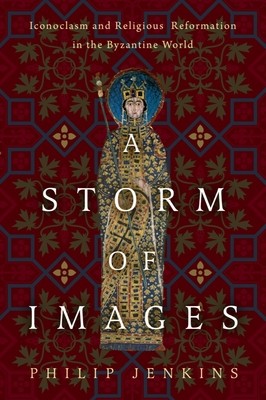
- We will send in 10–14 business days.
- Author: Philip Jenkins
- Publisher: Baylor University Press
- ISBN-10: 1481318225
- ISBN-13: 9781481318228
- Format: 16.2 x 23 x 3.4 cm, kieti viršeliai
- Language: English
- SAVE -10% with code: EXTRA
Reviews
Description
In the eighth century, the Byzantine Empire began a campaign to remove or suppress sacred images that depicted Christ, the Virgin, or other holy figures, whether in painting, mosaics, murals, or other media. In some cases, the campaign extended to breaking or wrecking images through what became known as iconoclasm. Over the following years, the emperors' zealous movement involved other acts that closely foreshadowed the Reformation movement that would sweep Western Europe in the sixteenth century. Like that later Reformation, iconoclasm marked an authentic revolution in religious sensibility, with all that implied for theology, culture, and visual perceptions of holiness. This was a pivotal moment in the definition of Christianity and its relationship to the material creation. It was also a time of critical encounters with the other Abrahamic religions of Judaism and Islam.
With A Storm of Images, Philip Jenkins offers a compelling retelling of the saga of how the iconoclastic movement detonated ferocious controversy within the church and secular society as icon supporters challenged the image breakers. Decades of internal struggle followed, marked by rebellions and civil wars, purges and persecutions, plotting and coups d'etat. After their cause triumphed, the image supporters made the cult of icons ever more central to the faith of Orthodox Christianity. Iconoclasm marked a watershed in the history of Late Antiquity and the Early Middle Ages, and it contributed to Western attempts to establish new empires.
The questions raised during these struggles are all the more relevant at a time when such controversy rages over the public depictions of history and the removal of statues, monuments, and names associated with hated figures. As in those earlier times, debates over images serve as vehicles for authentic cultural revolutions.
EXTRA 10 % discount with code: EXTRA
The promotion ends in 23d.14:17:05
The discount code is valid when purchasing from 10 €. Discounts do not stack.
- Author: Philip Jenkins
- Publisher: Baylor University Press
- ISBN-10: 1481318225
- ISBN-13: 9781481318228
- Format: 16.2 x 23 x 3.4 cm, kieti viršeliai
- Language: English English
In the eighth century, the Byzantine Empire began a campaign to remove or suppress sacred images that depicted Christ, the Virgin, or other holy figures, whether in painting, mosaics, murals, or other media. In some cases, the campaign extended to breaking or wrecking images through what became known as iconoclasm. Over the following years, the emperors' zealous movement involved other acts that closely foreshadowed the Reformation movement that would sweep Western Europe in the sixteenth century. Like that later Reformation, iconoclasm marked an authentic revolution in religious sensibility, with all that implied for theology, culture, and visual perceptions of holiness. This was a pivotal moment in the definition of Christianity and its relationship to the material creation. It was also a time of critical encounters with the other Abrahamic religions of Judaism and Islam.
With A Storm of Images, Philip Jenkins offers a compelling retelling of the saga of how the iconoclastic movement detonated ferocious controversy within the church and secular society as icon supporters challenged the image breakers. Decades of internal struggle followed, marked by rebellions and civil wars, purges and persecutions, plotting and coups d'etat. After their cause triumphed, the image supporters made the cult of icons ever more central to the faith of Orthodox Christianity. Iconoclasm marked a watershed in the history of Late Antiquity and the Early Middle Ages, and it contributed to Western attempts to establish new empires.
The questions raised during these struggles are all the more relevant at a time when such controversy rages over the public depictions of history and the removal of statues, monuments, and names associated with hated figures. As in those earlier times, debates over images serve as vehicles for authentic cultural revolutions.


Reviews